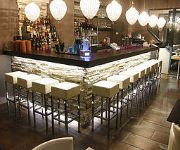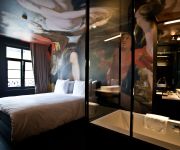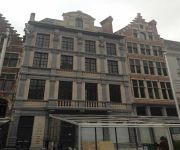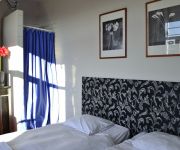Facts and Data
Webpages:
Official Unesco Page
Museum Plantin-Moretus
Basis Data:
Unesco World heritage since: 2005
Size of heritage:
Coordinates:
Longitude: 4,398°
Latitude: 51,218°
Summary
The Plantin-Moretus Museum is a printing plant and publishing house dating from the Renaissance and Baroque periods. Situated in Antwerp, one of the three leading cities of early European printing along with Paris and Venice, it is associated with the history of the invention and spread of typography. Its name refers to the greatest printer-publisher of the second half of the 16th century: Christophe Plantin (c. 1520–89). The monument is of outstanding architectural value. It contains exhaustive evidence of the life and work of what was the most prolific printing and publishing house in Europe in the late 16th century. The building of the company, which remained in activity until 1867, contains a large collection of old printing equipment, an extensive library, invaluable archives and works of art, among them a painting by Rubens.
Location on Map
Show bigger map on Openstreetmap
Plantin-Moretus House-Workshops-Museum Complex: A Glimpse into the History of Printing
The Plantin-Moretus House-Workshops-Museum Complex, located in the captivating city of Antwerp in the Flanders Region of Belgium, is a UNESCO World Heritage site that offers a fascinating insight into the history of printing. This complex, which includes the former residence and printing workshop of the Plantin-Moretus family, is a testament to the significant role Antwerp played in the development of the printing industry during the 16th and 17th centuries.
The history of the Plantin-Moretus House dates back to the mid-16th century when Christophe Plantin, a skilled bookbinder and printer, established his printing business in Antwerp. Plantin's workshop quickly gained recognition for its exceptional quality and craftsmanship, attracting renowned scholars and artists from across Europe. The Plantin-Moretus family continued to expand the business, and their printing press became one of the most influential in Europe during the Renaissance.
The Plantin-Moretus House, a magnificent Renaissance building, served as both a residence and a workplace for the family. The house itself is a remarkable example of 16th-century architecture, with its ornate façade and beautifully decorated interiors. The printing workshop, located within the complex, contains original printing presses, typefaces, and other tools used during the era, providing visitors with a unique opportunity to witness the printing process as it was practiced centuries ago.
Today, the Plantin-Moretus House-Workshops-Museum Complex stands as a living museum, preserving the rich heritage of the printing industry. The museum houses an extensive collection of books, manuscripts, and prints, including some of the earliest printed works in existence. Visitors can explore the various rooms of the house, including the family's living quarters, the printing workshop, and the library, which contains over 25,000 volumes.
One of the highlights of the museum is the Gutenberg Bible, one of the most famous and valuable books in the world. This rare edition, printed by Johannes Gutenberg in the 15th century, is a testament to the revolutionary impact of the printing press on society. The museum also showcases works by renowned artists such as Peter Paul Rubens, who collaborated with the Plantin-Moretus family on numerous projects.
The Plantin-Moretus House-Workshops-Museum Complex not only offers a glimpse into the history of printing but also provides valuable insights into the cultural and intellectual life of the Renaissance period. The complex has been meticulously preserved, allowing visitors to immerse themselves in the atmosphere of a bygone era. The museum regularly hosts exhibitions, workshops, and educational programs, further enriching the visitor experience and ensuring the continued appreciation of this UNESCO World Heritage site.
Visiting the Plantin-Moretus House-Workshops-Museum Complex is a truly captivating experience, allowing visitors to step back in time and witness the birth of the printing industry. This UNESCO World Heritage site stands as a testament to the ingenuity and creativity of the Plantin-Moretus family and their significant contribution to the world of printing.
Hotels and places to stay
T Sandt
Hotel Diamonds and Pearls
B&B Elimil
Matelote
Bed & Coffee
HotelO Kathedral
Dirk Suites
Antwerp Hotel National
Scheldezicht
Banks
Videos from the area
Videos provided by Youtube are under the copyright of their owners.

















